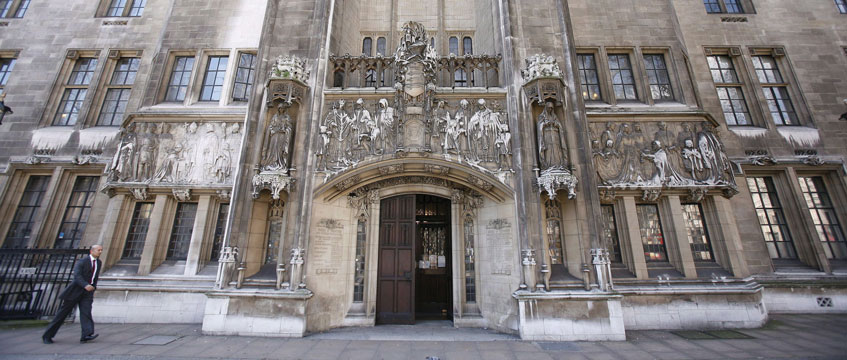It is a year since the groundbreaking decision in Duval v 11-13 Randolph Crescent Ltd was handed down by the Supreme Court [2020] UKSC 18; [2020] EGLR 17. The case has certainly been one of the most talked about in the residential property world in recent months, not least because the judgment has thrown up a whole host of practical challenges for both landlords and tenants in the context of alterations to leasehold properties.
What does Duval relate to?
By way of a reminder, it was held that where there is an absolute covenant against a tenant’s alterations in a lease, coupled with a landlord’s covenant to keep the leases in a building in similar form and to enforce the tenants’ covenants in those leases, a landlord cannot grant a licence to a tenant to undertake works which (without the licence) would have amounted to a breach of covenant.
Nine months on, how have landlords been reacting to the decision and adapting their approaches to applications from tenants for consent to works? And what has been the fallout for leaseholders intent on carrying out improvements to their flats but seemingly frustrated by the impact of this decision?
It is worth recapping that there is a distinction between an absolute covenant against alterations where the drafting states that alterations (in some cases limited to those of a structural nature) are not permitted at all and a qualified covenant, which states that alterations can be undertaken but only with the landlord’s prior written consent.
With a qualified covenant, it is implied by statute that a landlord’s consent may not be unreasonably withheld. There is no such implied proviso with an absolute covenant. Duval is concerned with absolute covenants.
What has happened in practice?
Not surprisingly, our experience is that landlords have been taking very different approaches, often dictated by the size of the block in question.
For those smaller blocks, where the freehold is owned by a tenants’ company, many are giving notification of proposed works to each of the tenants in the building with a window of opportunity within which they can object to those works. If they fail to respond within a specified period, the notice provides that it is assumed there is no objection. This still carries some risk, in that not all tenants may receive and acknowledge the notice, but it represents a pragmatic approach where there is a general consensus within a tenant-owned block that Duval should not prevent leaseholders from altering and upgrading their properties as they have done in the past.
The resulting licence for alterations can incorporate an indemnity from the tenant who is doing the works to the freeholder, in the event that any of the other tenants object and threaten proceedings against the freeholder. Whether this will be commercially palatable for a tenant will depend to some extent on the nature of the intended works. A major renovation of a flat involving structural alterations, the scaffolding of the block and noisy works for in excess of six months could well give rise to a potential challenge from the owner of the flat below, who may be planning to let their flat amid the ensuing noise and disruption. It is easy to see how a claim for damages could be made in these circumstances.
Other landlords are taking a very cautious approach and are following the decision in Duval carefully, by not agreeing to any works which would be in breach of the tenant’s covenant in the lease. This presents its own difficulties, not just for the particular tenant who wishes to undertake works to his or her flat but also, in the longer term, for the remaining tenants in the block, with the possible impact on the value and marketability of their properties if there is a general policy in the building against permitting alterations due to constraints in the lease.
It is fair to say that an easy solution to the conundrum has not yet presented itself, and seems unlikely to do so until Duval has been tested by another case on similar facts. Some tentative thoughts on possible solutions have been mooted, though each is not without its complications.
Possible solutions
- As mentioned above, for smaller blocks the practical approach has been to try and establish that there is no objection from individual tenants in the block and, once this has been established, to grant a licence for alterations with a tenant’s indemnity to the freeholder. This is working well for some set-ups, albeit these are early days, but there are obvious logistical difficulties with this approach for larger blocks.
- A freeholder could consider making an application to the Lands Tribunal under section 84 of the Law of Property Act 1925, which allows the modification or discharge of a restrictive covenant. The argument would be that the covenant impedes some “reasonable use” of the property. For section 84 to apply, the lease must have been granted for a term of at least 40 years (which will invariably be the case) and more than 25 years must have expired. This might be suitable for a scenario where there is only one dissenting tenant and it seems clear that the works will not adversely affect the remainder of the building, and so it would be reasonable for the Upper Tribunal to consider authorising the works to go ahead, if not to modify the covenant itself.
- If a tenant is in the process of extending their lease under the statutory route, they might consider advancing an argument that an absolute covenant against all alterations is in fact a “defect”. The statutory process allows the new lease to address any defect in the existing lease. This has yet to be tested, but it does not seem too much of a stretch to make a case that all alterations should be subject to the provision of consent where it is reasonable that consent should be given. This does not assist those who are not currently in the position of extending their leases and so it has obvious limitations.
Wider implications
Concern has been expressed as to whether Duval could have more far-reaching consequences and apply to other covenants in the lease, such as an absolute covenant to keep a flat carpeted or against the keeping of pets in flats.
These covenants have been routinely relaxed in deeds of variation or by informal permissions being issued, but does Duval mean that it is no longer possible to do that? It probably depends on whether the requirement is listed as a covenant in the lease. If it is then, on the face of it, there seems no reason why the Duval principle should not be extended to this sort of scenario. If there is a carpeting requirement, or a prohibition on keeping pets is within the regulations section of the lease, where there is provision for the landlord to vary and to add to/amend the regulations over time, then it seems fair to say that the regulations were intended to build in some flexibility and so Duval ought not to apply.
For the moment, both landlords and tenants find themselves feeling stuck. In the past it was not uncommon for premiums to be paid to relax alterations covenants in a lease or for consent to be provided to specific structural works outside the strict requirements of the lease. Landlords have therefore lost this potential income stream and so are feeling the impact of the decision.
For the time being, buyers of leasehold property should certainly look with care at the nature of an alterations covenant in the lease, not only with their own plans in mind but also with one eye on future resale. Enquiries should be made as to the freeholder’s policy on alterations in the context of Duval, where any parts of the alterations covenants are absolute.
Duval: The basic facts and the Supreme Court decision
- Duval concerned a building in Maida Vale, London W9, containing nine flats, all let on long leases.
- Mrs Winfield (the tenant of flat 13) wanted to carry out works to her flat – including the removal of an internal structural wall – which was absolutely prohibited under the terms of her lease. The landlord was willing to grant consent, but Dr Duval (who owned two other flats in the block) objected and brought a claim against the landlord for a declaration that it would be in breach of its mutual enforceability clause in her leases if it granted consent to the works. The clause in question obliged the landlord to enforce the tenants’ covenants contained in the leases of the flats in their building.
- The Supreme Court found for Dr Duval on the grounds that the landlord would have effectively “put it out of its power” to enforce the covenants in the lease if it had granted consent, ie the covenant in Dr Duval’s leases would be pointless if the landlord could essentially modify or permit breaches of covenants in other leases as it pleased.
- This effectively means that where a lease contains a landlord’s covenant for all leases in the building to be in substantially the same form as well as an obligation on the landlord to enforce those tenants’ covenants on request by another leaseholder, a landlord will be in breach if it gives consent to another tenant to carry out works in breach of an absolute covenant.
Lisa Bevan is senior counsel in the private client group at Taylor Wessing LLP








